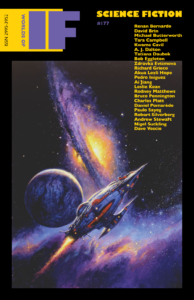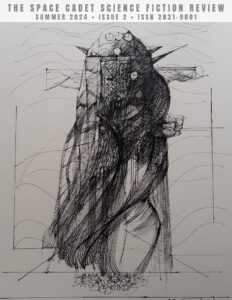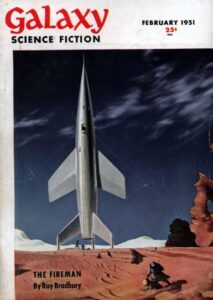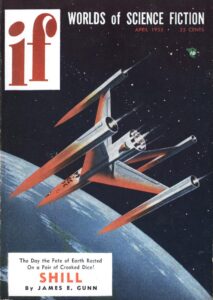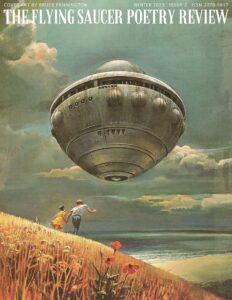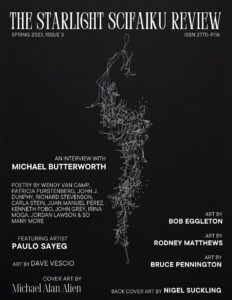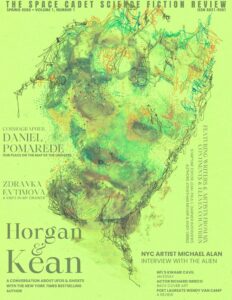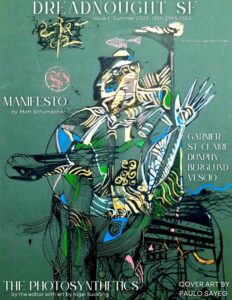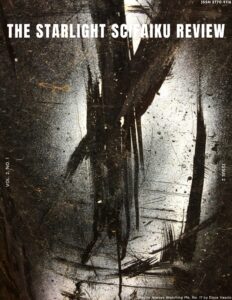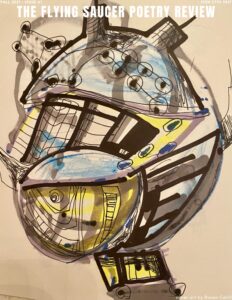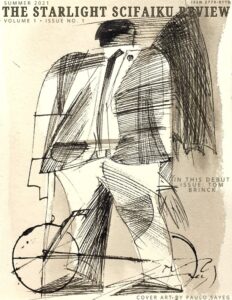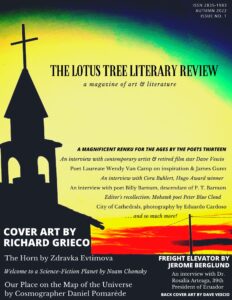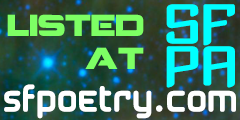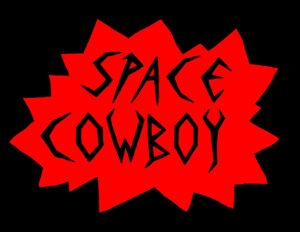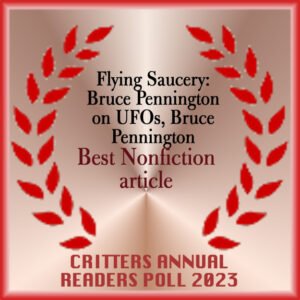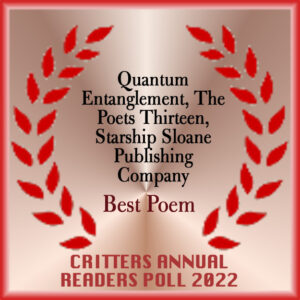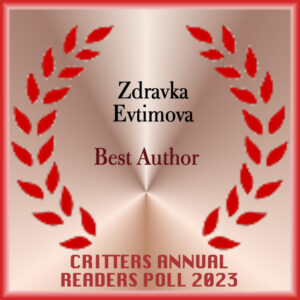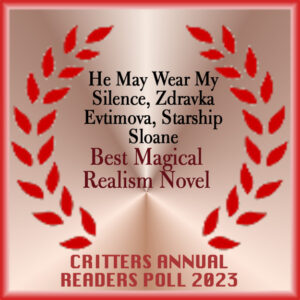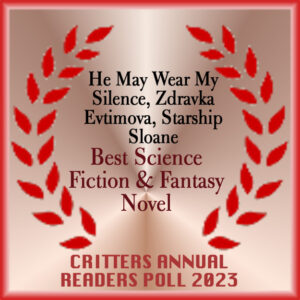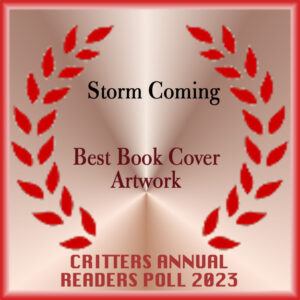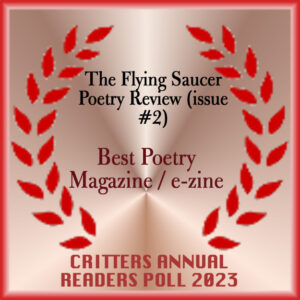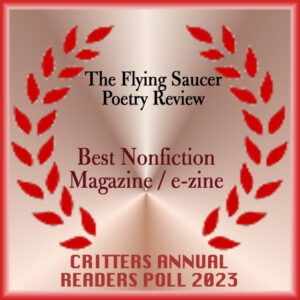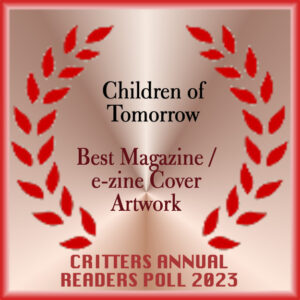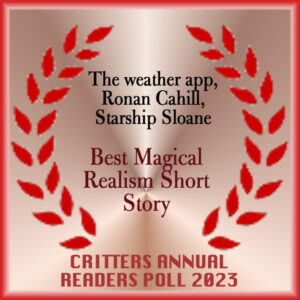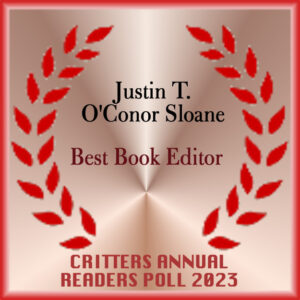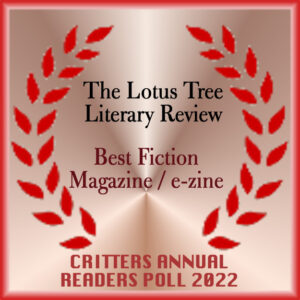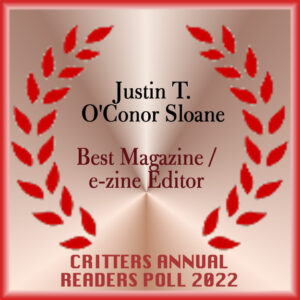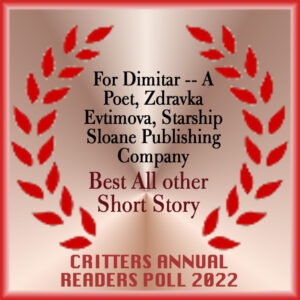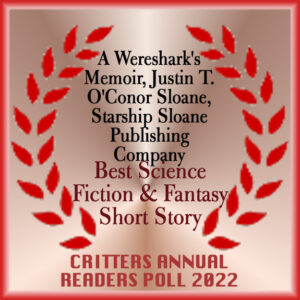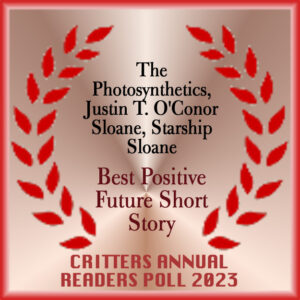*****Subs Closed*****
The Starlight SciFaiku Review is an online literary journal of science fiction haiku, the closely related forms of senryu and tanka, their sequences, and minimalist line art and paintwork in black & white (or very nearly so) — think, haiga or an even further-reduced aesthetic, a visual equivalent of SciFaiku. Published irregularly.
Response Time
We will respond to all submissions — but in the tradition of “T. Oh Come On Slow One” (a science fiction trivia gauntlet has just been thrown), we may take longer than you would like, depending on how many submissions we have received.
You will be glad to know that we automatically acknowledge receipt of all work submitted to us as we receive it so that you do not wonder if it has been lost in cyberspace somewhere and so that you can easily keep track of when you submitted your work to us.
All of that being said and with no promises being made, we will endeavor to contact you in three months as to whether your work has been accepted or declined.
If you have not heard from us in this time period, use the Contact Us form in the About Us dropdown menu to rouse us from our literary stupor, deep in our cups. Be sure to include the title of your work and the name of this Review to assist us in this process.
Fees
No submission/entry fees, reading fees, or fees of any other kind are charged for submitting your work to this publication.
Payment
We do not offer payment.
Rights
1) Starship Sloane Publishing Company, Inc. requires First Serial Rights, meaning that it has been granted the right to be the first to publish your work online, digitally, or in print.
2) Starship Sloane Publishing Company, Inc. requires Electronic Rights, meaning that it has been granted the right to publish, distribute, archive and store your work, its content, in any and all electronic formats, media, and capacities; retaining the right to reprint the content of its publications (webzine, emagazine, ebook, and print) in any potential forthcoming features, specials, anthologies and the like, whether online, digitally, or in print; and retaining the right to reprint content from its publications (webzine, emagazine, ebook, and print) on any and all of its websites and social media platforms, including for promotional purposes, site spinoffs, and so forth, with proper attribution.
Submission of Unpublished Work
We accept submission of your original, unpublished work. We are not accepting work that has previously appeared in publication or that has already been selected by another publisher to appear in publication. Note: Self-published work is fine to submit.
Simultaneous Submissions
We accept simultaneous submissions but please let us know right away if your work is accepted elsewhere.
Submission Frequency & Resubmission Policy
You may submit a batch of up to ten poems and a batch of up to five images of artwork, exactly ONE time per submission period/publication cycle of The Starlight SciFaiku Review. That’s the limit, even if you did not submit the maximum of ten poems or five images allowed in each batch. If you submit another batch of work in the same category after having already submitted during that submission period it will not be reviewed. Asynchronous submission of work to each of the categories is fine.
You may submit new work during each new submission period. If your work has been declined during a previous submission period, please do not submit that work to us again unless significant and meaningful revision has been done. In some very, very rare cases, we may provide editorial feedback when we think that your work is very, very close to being right for publication in the Review.
Closing a Submission Period
Currently, the determination to close a submission period is contingent upon the quantity and quality of the submissions we receive. Ultimately, submission periods will end absolutely no later than one month prior to publication of the Review; or earlier if the determination is made to do so.
Notification in the submission portals will be posted when the submission period has been closed.
SciFaiku Submission Guidelines
Be sure to have read the About page for The Starlight SciFaiku Review to best understand the Geist of this literary journal and what we’re looking for.
We accept only science fiction haiku, the closely related forms of senryu and tanka, and their sequences for this literary journal.
Please read Tom Brinck’s The SciFaiku Manifesto to gain a complete understanding of this splendid form of science fiction poetry. It is a short and engaging read — and highly recommended!
SciFaiku is born of contemporary international haiku. SciFaiku, like traditional haiku, usually contain about 17 syllables, known as on or morae, in three metrical phrases of 5-7-5 but arranged in three lines per the English literary adaptation of modern haiku. There is flexibility here, both in the number of lines and in the syllable count but a draconian brevity is an absolute must and an electrical clarity of thought and explosively vivid imagery are ruthlessly prized.
Like traditional haiku, SciFaiku should ideally contain a kireji or verbal caesura, a cutting word. However, a kigo, or seasonal word, is not a requirement and could perhaps prove to be an almost comically burdensome element to include in SciFaiku anyway, but we’d love to see it where you can manage it! Importantly, whereas traditional haiku emphasizes nature, SciFaiku is concerned with science fiction, which may or may not even reference nature — we’ll leave that up to you — but it should definitely include science and technology words that evoke the wondrous world of science fiction. Titles are also optional.
Batch Limit
You may submit up to ten, but no fewer than three (with sequences being the exception: a sequence can exceed [10] linked scifaiku but must not consist of less than [3] scifaiku — no min. on sequences following these guidelines, with a max. of [10]), science fiction haiku, senryu, and tanka, in total. These should be submitted in one batch.
Standard Manuscript Format (short version for those longer in the literary tooth)
Please submit your work using industry standard manuscript formatting but briefly peruse our requirements below. Thank you.
Standard Manuscript Format (long version with some insight for those shorter in the literary tooth)
Navigating the sometimes mystifying world of literary submissions requires some patience and a work ethic. If you’re very new to all of this, you may not know that there is a standard manuscript format for this industry or that it varies a little from source to source — so it’s not really so standard after all; and of course many editors have their own set of in-house subjectivities. Search “standard manuscript format” if you have never done so and you’ll see what I mean and as you submit your work around, you’ll further see what I mean. So, what is one to do? Here’s the deal, even though variations in the details exist between interpretations of the standard manuscript format, they are all substantively in agreement. An editor is unlikely to toss your manuscript if you were to use Courier instead of Times New Roman and vice versa. I will provide one link to propel your learning curve in this matter if you are at that stage in your development as a writer who is just learning the market; but your learning curve is, of course, yours entirely, as it is for all writers. Here’s the link to Bill Shunn’s highly regarded, very helpful and very entertaining guide to properly formatting a variety of manuscripts for submission.
Note: The following guidelines, the description of what kind of poetry and artwork we’re looking for and the batch totals for each are provided again in the submission portals, be sure to double-check these before submitting your work.
Manuscript & File Format Guidelines
Adhering to the industry standard manuscript format is the default, of course, and so it will always suffice. Remember, the idea behind such formatting is to improve the readability of your manuscript by editors, simple as that, it’s not designed to be oppressive. That said, the following guidelines are important to this publishing house, for all work submitted, including short forms. You’ll notice that our guidelines adhere to the standard manuscript format for the most part, but not entirely, as is the case with most publishers — we know what we like, and we’re going for a certain aesthetic.
Adhering to our specific guidelines facilitates ease of digital transferability of your work in addition to the aforementioned readability and aesthetic.
- Left-aligned title (for short form work)
- Byline (skip it, we look at name placement from a whole-page aesthetic)
- Left-aligned text
- One-inch margins all around
- 12-pt font
- Times New Roman
- Black ‘ink’
- Double spaced for long form (not necessary for short form)
- One space after a period, not two
- File must be submitted in an editable format, specifically, a Word Document (.doc).
- ATTENTION: Do not try to submit a Word .docx file (that’s .docX), our web hosting service will not allow a .docx file to be uploaded and so we have blocked that file type in the submission form. This issue has absolutely given us the bivering shitz but there is no working around it. Simply save your .docx file as a .doc file, it’s very quick and easy to do: Open the document > File > Save As > This PC > Location > Word 97-2003 Document (*.doc) > Save (you don’t need to rename it, it creates a new file).
Although not required, please include a short writer/author bio.
SciFaiku Artwork Submission Guidelines
We accept only science fiction minimalist line art and paintwork in black & white (or very nearly so), think, haiga or an even further-reduced aesthetic, a visual equivalent of SciFaiku, for this literary journal.
Batch Limit
You may submit up to five images of your artwork. These should be submitted in one batch.
Artwork File Format Guidelines
We will accept JPEG/JPG and PNG files for this type of artwork uploaded through the submission portal. These formats are ideal for presenting artwork on a website without bogging it down and will allow us to produce a quality print version of the online literary journal. No TIFF files, convert them to JPEG or PNG. If you’re unsure how to do this, the following links to Adobe (TIFF to JPEG) and Adobe (TIFF to PNG) provide a good tutorial.
We do not anticipate encountering file size issues.
Please provide a description of the materials used to create your artwork.
Although not required, please include a short artist bio.
Next step, head over to the submission portals!
